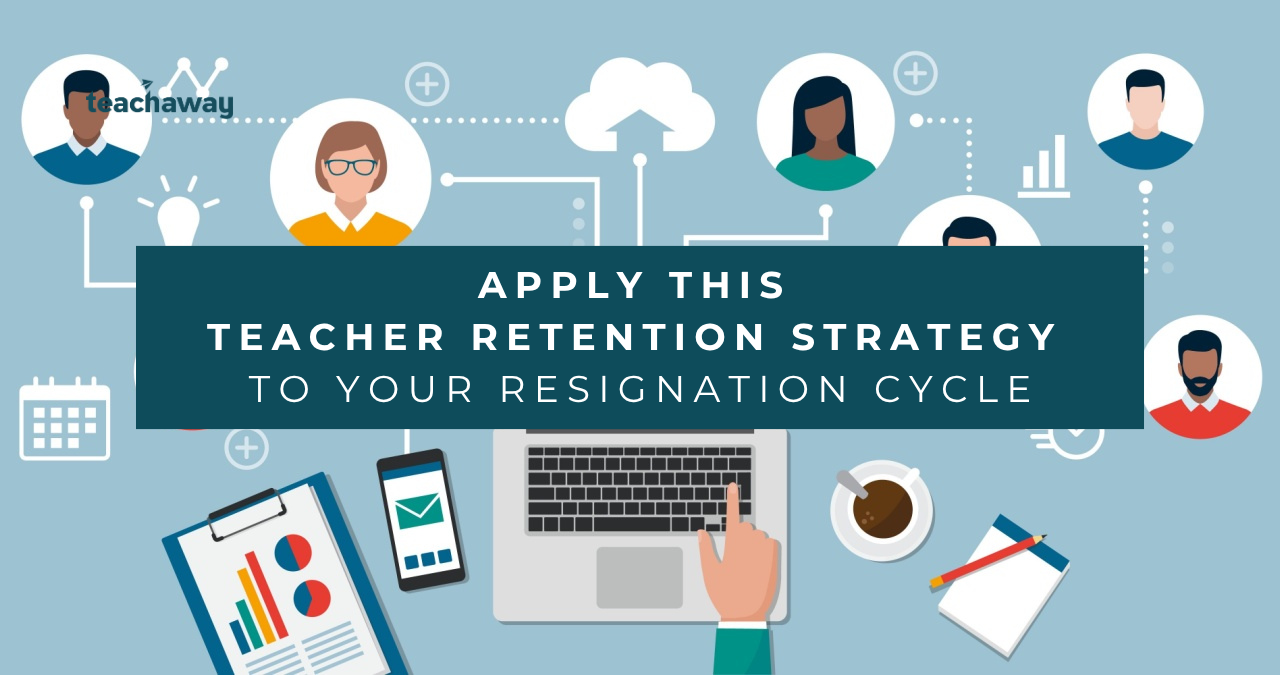Resignations are a natural part of any school’s staffing cycle. While they can cause disruption, the reality is that turnover should be expected rather than feared.
School recruiters and hiring managers who anticipate resignations are better positioned to turn them into opportunities for organizational growth and team improvement.
In fact, when managed strategically, resignations can become an integral part of a long-term retention plan.
Why Your Retention Strategy Should Include Resignations
A common mistake in school recruitment is viewing resignations as unforeseeable circumstances. This perception often leads to reactive hiring practices, where the focus is on filling the gap as quickly as possible rather than assessing how the departure fits into the school’s long-term vision. Understandably, the instinct to act quickly comes from the pressure to maintain classroom continuity and minimize disruption to students.
However, constantly reacting to resignations instead of planning for them can cause more harm than good. Schools that view resignations as part of a dynamic staffing strategy can better manage transitions and even strengthen their retention practices. Instead of being caught off guard, prepare for resignations by embedding them into your retention strategy.
Turning Resignations into Retention Opportunities
To transform resignations from challenges into strategic opportunities, schools should develop a proactive approach that anticipates turnover. Here are some key strategies that align with retention-focused practices:
Build and Maintain a Strong Talent Pipeline
An ongoing talent pipeline is essential. Keep a pool of pre-screened candidates on standby, including substitute teachers and recent graduates interested in future openings. This ensures minimal disruption and demonstrates your commitment to maintaining quality education, even amid staffing changes.
Real-world example: An international school established a rotating roster of long-term substitutes familiar with the school’s teaching methodologies, enabling seamless coverage when resignations occurred.
Use Career Development as a Retention Tool
Open communication about career plans is essential. Encourage staff to discuss their professional goals openly. This transparency helps you anticipate potential resignations and plan accordingly. When teachers feel supported in their growth, they are more likely to remain committed, even if they eventually move on.
Tip: Regular career development meetings can give teachers space to discuss their ambitions, allowing you to support growth within the organization or plan for transitions if they decide to leave.
Leverage Exit Interviews to Strengthen Retention
Exit interviews are not just about gathering feedback but about creating actionable insights that inform your retention strategies. When conducted thoughtfully, they reveal trends and areas for improvement that can reduce future resignations.
Real-world example: A school with a high turnover rate in its language department discovered through exit interviews that teachers felt unsupported in professional development. Addressing this gap led to a more robust mentorship program and higher retention.
Foster Mobility Within Your School
Internal mobility is a critical part of a strong retention strategy. When you offer teachers opportunities to advance within the school, they are more likely to stay rather than look elsewhere for growth.
Example: When a department head resigned, one school promoted a senior teacher who had already shown leadership potential, preserving team morale and continuity.
Engage Former Employees Through Alumni Networks
Maintaining relationships with former teachers can create a talent pool you can tap into later. Alumni who left on positive terms may return when their career goals align or refer quality candidates.
Practical Tip: Host annual alumni events or keep an active social media group to maintain connections.
Make Resignations a Strategic Asset
When viewed strategically, resignations are not just gaps to fill—they are opportunities to improve retention, strengthen team dynamics, and refine your hiring practices. By proactively incorporating resignations into your retention strategy, you not only reduce disruption but also build a more resilient and loyal workforce.
For more insights on strengthening your recruitment and retention strategy, visit Teach Away’s recruitment resources page.
